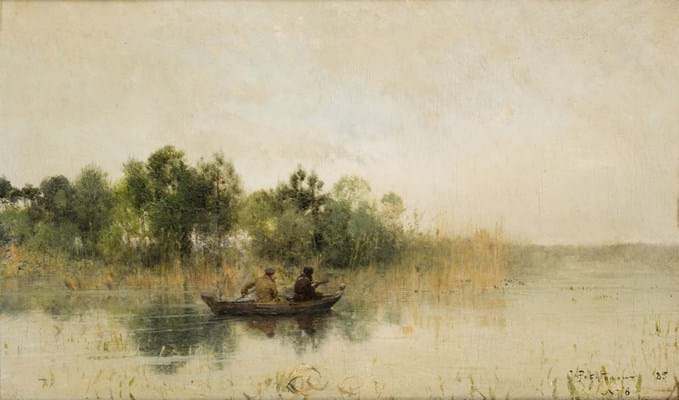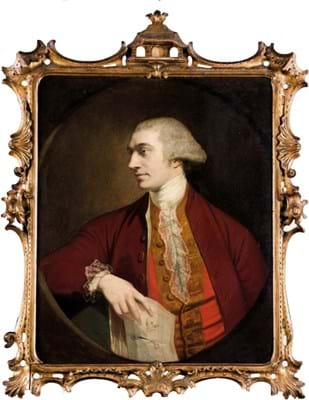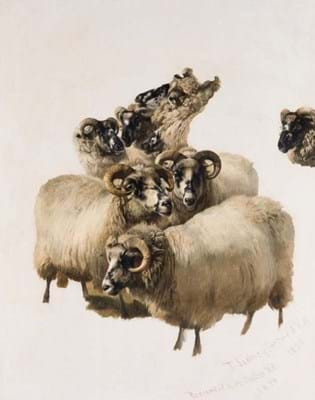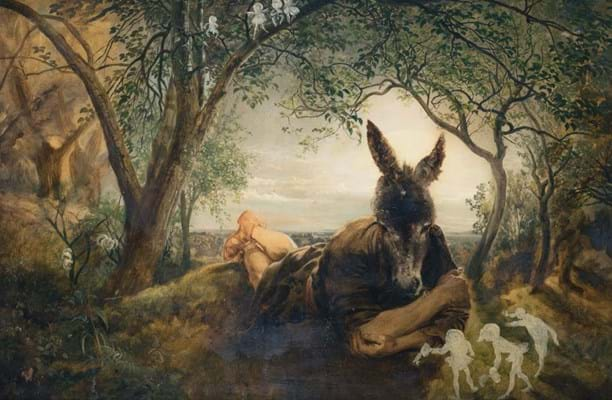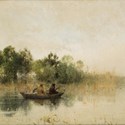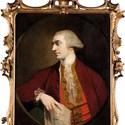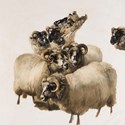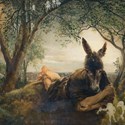It featured a core group of good-quality Victorian paintings, illustrations by a strong line-up of British cartoonists prints, plus the obligatory dose of dog and equestrian pictures.
Started some 40 years ago, the single-owner collection had been amassed with a ‘discerning eye’ from London’s dealers and auction houses. These pictures, according to the promotional literature for the sale, went on to adorn the walls of the “grand dining rooms, drawing room and elegant corridors of the club”.
The catalogue’s “distinctive club feel” was what appealed strongly to buyers, according to Moore-Gwyn. It is a tried and tested formula. In 2013, Sotheby’s successfully sold the collection of London club owner Mark Birley, which, though larger in size, was close in content and general feel.
“One’s reaction could have been that a lot of the material in our sale was unfashionable. But the market proved that’s not the case, with some encouraging prices across the board,” said Moore-Gwyn.
An active trade and private buyers absorbed 92% of lots to net £271,620: Moore-Gwyn’s best total for a Blythe Road sale. The only high-value failure on the day was a St Ives harbour view by Charles Napier Hemy, which went unsold at £20,000-30,000.
Russian bearing
The exception to this all-British affair was the sale’s top-earner – a small duck hunting scene painted in 1885 by the sought-after Russian painter Ivan Pavlovich Pokhitonov (1851-1924).
A zoologist and self-taught artist, he is known for hunting and shooting scenes which he executed with an almost obsessive love of detail. He achieved this with an arsenal of tools beyond the paintbrush – scalpels, magnifying lenses and fish bones.
Depicting two figures duck hunting on a lake, the 6 x 10in (15 x 25cm) work drew some Russian interest from the three active phones. It was hammered down on top estimate to a trade buyer for £80,000.
An oil on board depicting Bottom and the fairies from Shakespeare’s comedy A Midsummer Night’s Dream sold to a private collector for a punchy £25,000, against a £15,000- 20,000 guide. Acquired from The Fine Art Society, the 22in x 2ft 8in (55 x 83cm) work was painted by Joseph Noel Paton (1821-1900), an exponent of the Victorian fairy tradition best known for his paintings inspired by the Shakespeare play.
In May 2014, Sotheby’s sold an autograph version of Paton’s most famous work, The Quarrel of Oberon and Titania (now in the National Galleries of Scotland), for £37,500 (including premium).
The pick of the portraits was a fine 18th century canvas in a period frame of Dr Richard Guy with an attribution to Robert Edge Pine (c.1730-88).
Guy was an interesting figure. An authority on the treatment of cancer in the mid-18th century, he advocated a non-surgical approach using a series of medicines to attack tumours. He claimed over 100 successful cures without surgery as a result.
The 2ft 5in x 2ft (76 x 62cm) oil on canvas sold to a trade buyer at £13,500 – more than four times the estimate.
The sale also included a portrait of George IV as the Prince of Wales in the uniform of the 10th Light Dragoons, which the auction house had identified as probably by the artist Simon de Koster (1767-1831). It bettered a £2000-3000 guide to sell for £5800.
The stand-out lot among the animal subjects was a remarkably modern-looking study of rams by the 19th century painter Thomas Sidney Cooper (1803-1902). On a plain background (Cooper’s finished sheep usually sit amid rolling countryside), the 2ft 10in x 2ft 2in (87 x 68cm) oil on canvas sold for £6200 against a punchy £6000-8000 guide.


